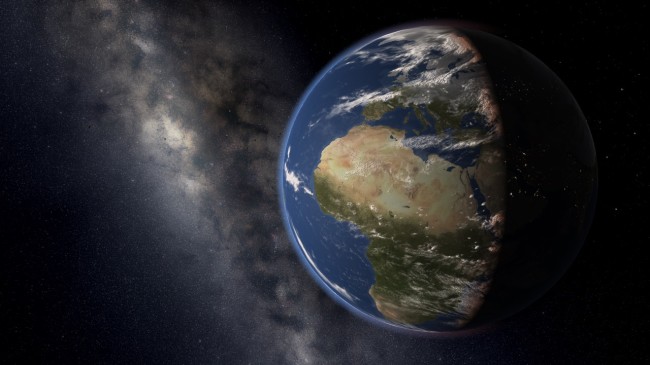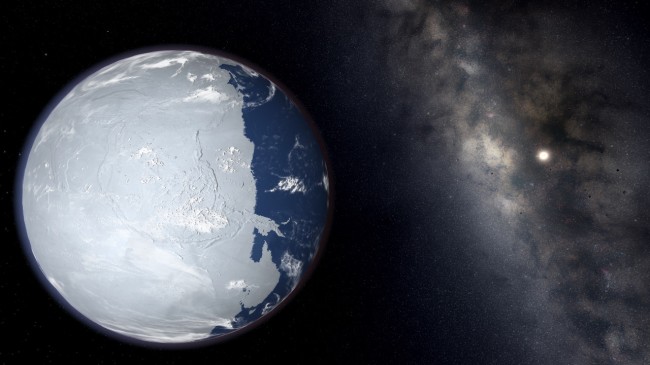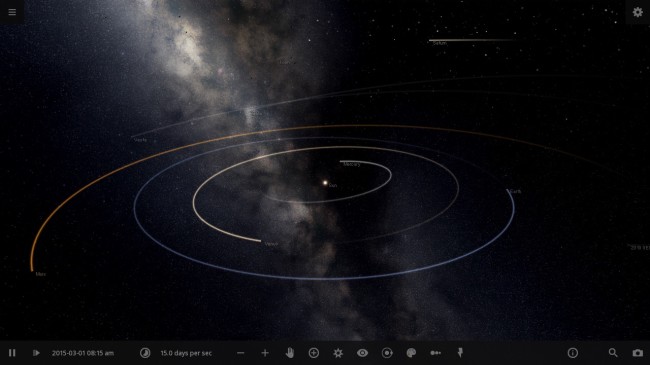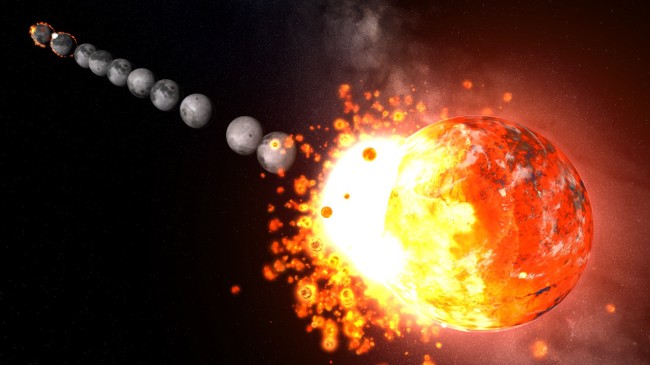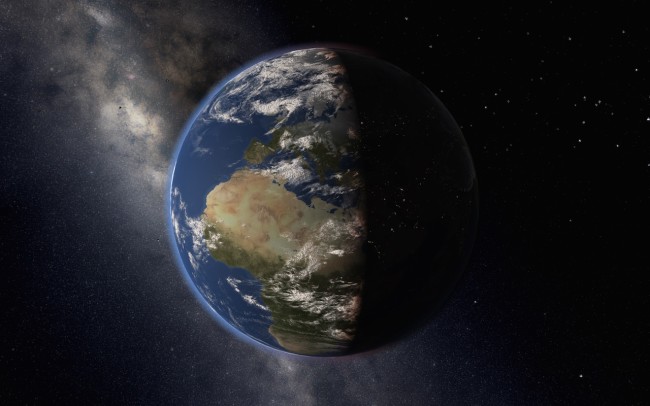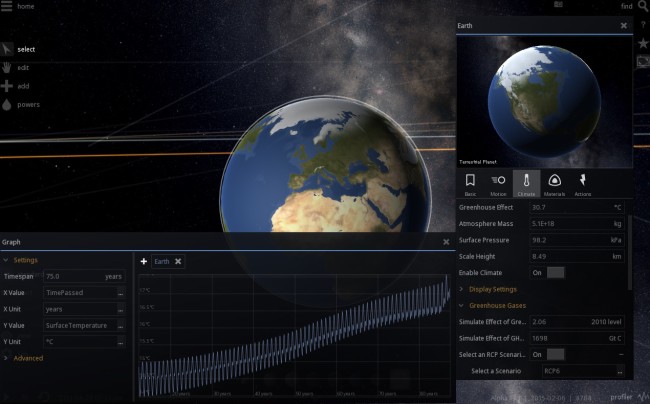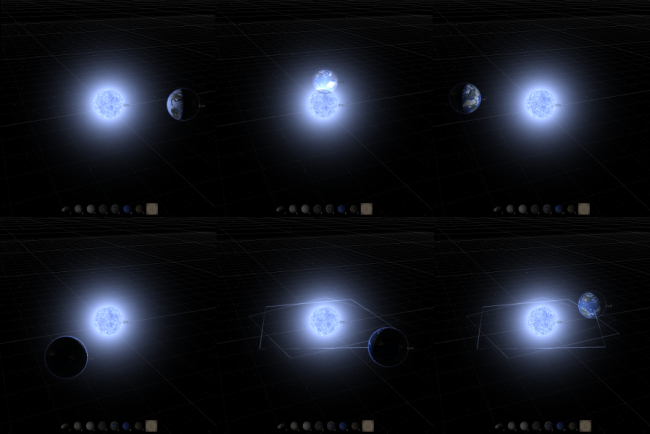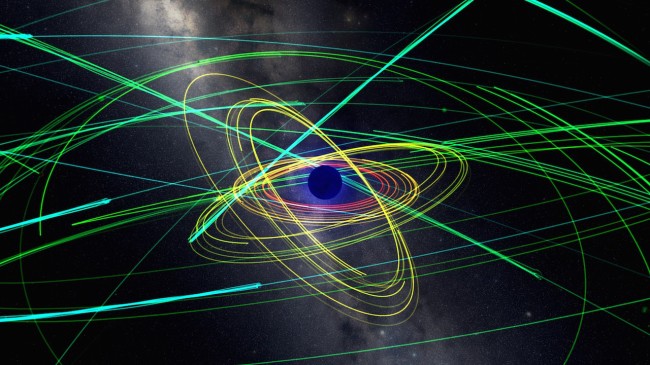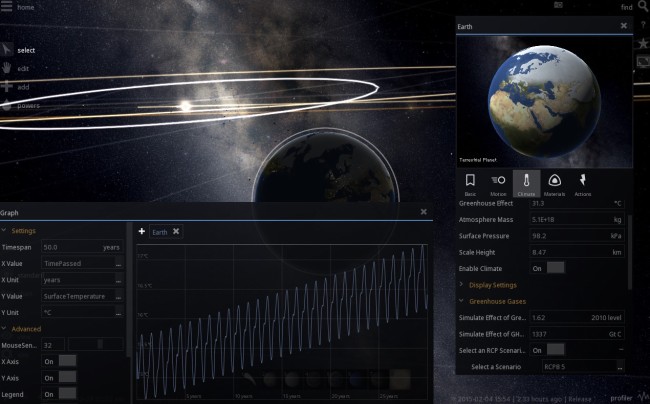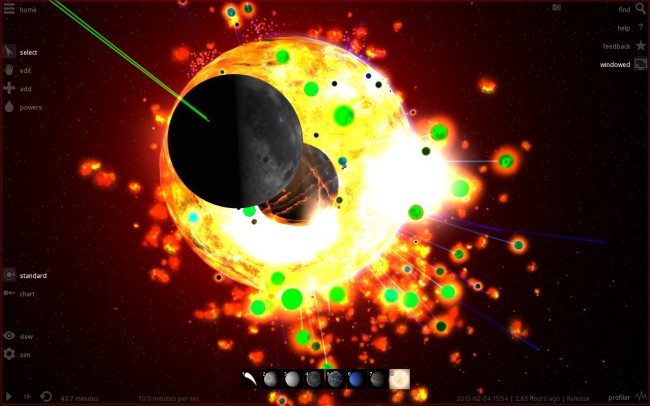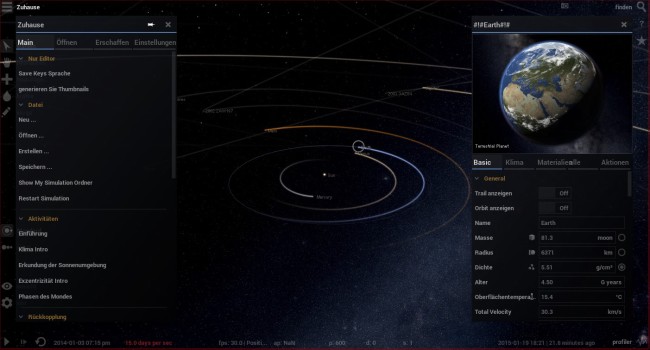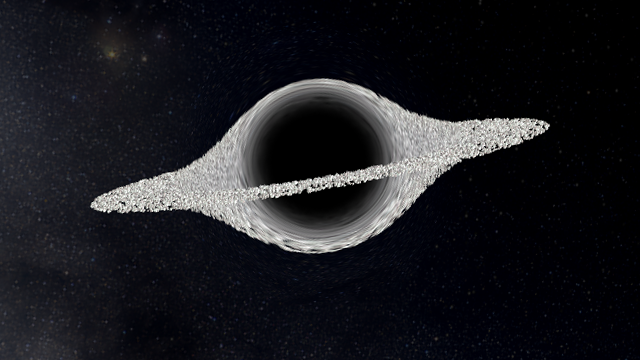Jar
This user hasn't shared any biographical information
Posts by Jar
Happy Earth Day!
Apr 22nd
First observed in 1970, Earth Day now gathers over 1 billion people in 192 countries every year on April 22 to celebrate our planet and raise awareness of the issues it faces. According to Earth Day Network, that makes it the largest civic observance in the world.
The growth of this movement toward the care and appreciation for our planet is evident all around us. Environmental awareness is no longer reserved for activists and radicals. “Going green” and “reducing your footprint” have become familiar, if not trendy, concepts.
But despite this, human-caused climate change continues to take us further down the road toward inevitable crisis. It’s a bleak forecast, but one that we, as individuals, nations, and a global community, must confront if we want to create the necessary changes.
Earth in Universe Sandbox ²
In Universe Sandbox ², we’ve added a simple climate simulation for Earth. We hope it helps in understanding how our climate works, and how fragile our planet is.
Here are a few things you can try in Universe Sandbox ²:
-
Simulate Future Climate Scenarios
- We’ve included the ability to simulate scenarios based on data from the most recent IPCC report
- We recommend trying the Climate Scenarios activity (Home -> Main tab)
- You’ll learn how to use the different models and graph Earth’s temperature over time
- Learn more about simulating these scenarios in our previous blog post
-
Tidally lock the Earth to the Sun
- Select Earth (in the default Solar System sim)
- In Earth’s properties window, click the “Motion” tab
- Scroll down and click “Tidally Lock”
- Now one side of the planet will always face the Sun
- And the other side of the planet will begin to freeze over
- Tidal locking is why there’s a “dark side of the moon.” From here on Earth, we can only ever see the same side
-
Turn Earth into a Comet or a Snowball
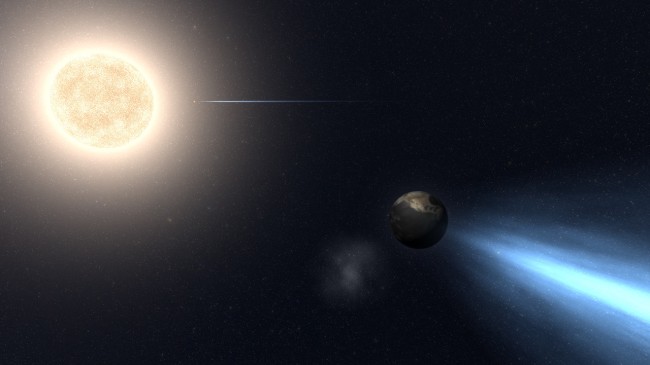
- Try moving the Earth closer to the sun to turn it into a comet.
- Or move the Earth out past Mars and watch it freeze over. (Load the sim “Earths Next to Sun” to see multiple Earths at various distances from the Sun)
If you don’t own Universe Sandbox ², you can get instant access to the alpha through our website: universesandbox.com/2
Alpha 15 Preview: Performance Boosts & UI Changes
Apr 6th
We’ve been working hard on Alpha 15. It’s coming, slowly but surely.
In our last post, we talked about the upcoming performance improvements. Because of this substantial physics rewrite, it’s taking some time to fully integrate the changes and restore everything to working condition. But the results are worth it; we’re seeing some big performance boosts.
We’ve also made some major changes to the UI. It’s still a work-in-progress, but we’re very excited about its direction.
The changes to the UI have made it easier to control the simulation and explore some features which were previously buried under layers of menus. Realistic physics and data make up the engine that powers Universe Sandbox ², but the key to revealing the wonders of our universe lies within the ability to interact, manipulate, and experiment. For us, this means making it easy to answer the question, “What would happen if I chucked the Earth at the Sun?”
Keep your eyes peeled for Alpha 15.
If you don’t own Universe Sandbox ², you can get instant access to the alpha on our website: universesandbox.com/2.
More Performance Improvements in Universe Sandbox ²
Mar 20th
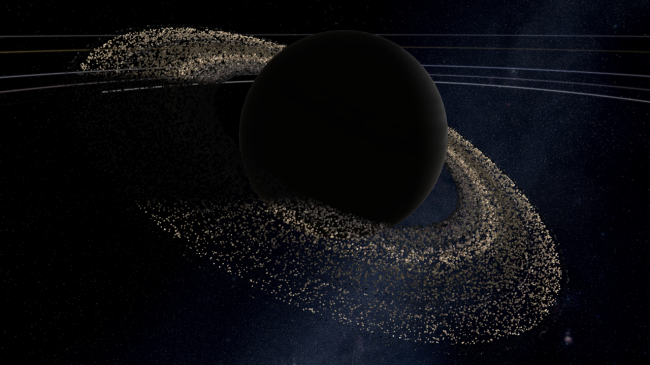
The last few alpha updates of Universe Sandbox ² have each included changes in the physics code to improve performance on a wide range of hardware. But never assume that Thomas, our numerical physics developer, is done with optimization; there’s always more performance that can be squeezed out.
That being said, sometimes it’s not worth trying to squeeze out the last drop; sometimes it’s better to start fresh. Thomas explains in his video description: “The core NBody physics was rewritten from the ground up to give back some of the raw computation speed, which had been lost under layer upon layer of C# sugar coating.”
If all goes well, this could mean that the physics-side of Universe Sandbox ² will run much faster than it does now. In addition, it will be running asynchronously, which essentially means that even if physics is bogged down with thousands of calculations, the user interface should still be responsive.
Check out Thomas’s video below for a demonstration of how powerful the new system is. 50 000 particles around Saturn would normally have brought this simulation to a halt, but now it runs very smoothly:
https://www.youtube.com/watch?v=pxh5FUmRQyU
From the description:
Note that the slight stuttering, primarily at the beginning, is caused by the screen recording.
This demonstration shows the performance on an Intel i7 CPU running the rewritten C# engine on Mono. The rewrite will let us quickly add support for native code using SSE as well as native code running C++AMP on CPU or GPU, plus still OpenCL.
Full implementation may take a bit, but we’re very excited to see it up and running in Universe Sandbox ². When it’s ready, we’ll be sure to let you know.
Get instant access to the alpha and a pre-order of the final Universe Sandbox ²: universesandbox.com/2
Alpha 14 Now Available
Feb 27th
A long list of bug fixes, first pass on total fragmentation, re-enabled exploder tool, better performance for slower machines, and further improvements to the user interface.
Run Steam to update or buy Universe Sandbox ² now: universesandbox.com.
Our last update introduced a lot of new features, and took a bit longer than we expected. So for Alpha 14 we returned to our monthly release schedule and focused on fixing bugs. Some of these bugs have been around for a few versions, and others were introduced with last update’s big changes.
Total fragmentation is disabled by default as it’s still a work-in-progress, but you can enable it in Simulation settings (gear icon on the left). It can best be seen with the re-enabled exploder tool. Select Powers on the left, then select Exploder, then click on a body to make it instantly explode. This is also a work-in-progress; better transitions are on the way.
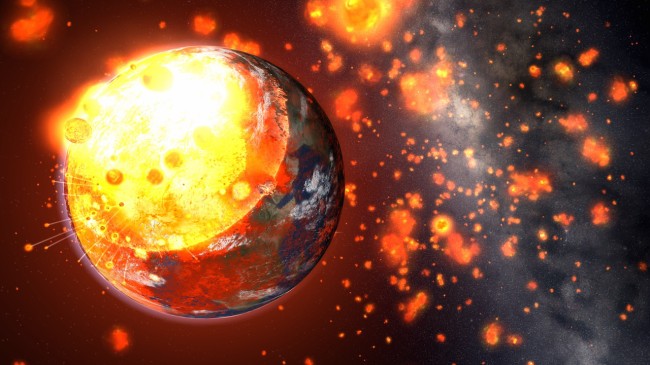
We also made improvements to collision and gravity calculations when running CPU mode. This means better performance for older hardware which can’t run OpenCl mode.
We revamped tooltips for smarter placement and increased visibility. We also made the Launch Body toolbar customizable, so now you can set the hotkeys to launch any body you choose.
For a full list of bug fixes and improvements in Alpha 14, check out the What’s New.
And as always, we’d love to hear your feedback:
Future Earth Climate Scenarios
Feb 20th
One of the most important features in Universe Sandbox ² is the ability to simulate Earth’s climate. It’s a relatively simple simulation, but it helps demonstrate exactly how fragile and ever-changing our climate is.
In Alpha 13, you can select possible future scenarios for Earth’s climate. These scenarios simulate the rise in carbon dioxide levels in Earth’s atmosphere caused by human activity up until the year 2100.
To simulate these, we use the same Representative Concentration Pathways used in the latest report from the Intergovernmental Panel on Climate Change (IPCC). These four pathways are projections for the future of greenhouse gas emissions and resulting concentrations in our atmosphere. You can see each pathway’s projections in the graphs below (left: emissions; right: concentration).

CO₂ emissions and associated concentrations generated from the RCP Database.
There are many factors we can consider when looking at what changes will affect emissions. Policies, land use, global population, our attitudes toward production and consumption — these can all have a huge impact on greenhouse gas emissions. Each RCP makes different assumptions about how and when these factors might change.
To stabilize concentrations, decreases in emissions are required, because even when emissions are lowered, CO₂ hangs around in the atmosphere for a long time.
Not only do the scenarios project different outcomes for concentrations, but, importantly, they each follow a unique trajectory based on a range of possible socio-economic changes. One assumes a peak in greenhouse gases in the next decade, while another assumes that there will never be stabilization. (This is simplified for the sake of this introduction; you can learn more here.)
In Universe Sandbox ², you can enable RCPs by selecting the Climate tab in Earth’s properties and toggling “Select an RCP Scenario.” The default is RCP 8 5. Click the (+) icon to select one of the other 4 scenarios.
Once enabled, the pathway’s concentration level will be tied to the simulation year. The change in net radiative energy balance is also specified by the scenarios, and we put that right into our energy balance as a decrease in outgoing infrared energy. This has the effect of increasing the greenhouse effect and ultimately increases the average temperature of the planet. To see how the different scenarios play out, you can graph Earth’s temperature over the course of several decades. Below is a simulation of RCP6 through 2100.
These pathways are not forecasts. But simulating them in Universe Sandbox ² can help you gain a more intuitive understanding of what is possible for the future of Earth’s climate.
Check out this blog post by Naomi, Universe Sandbox ²’s climate scientist, to learn more about how we simulate climate: Climate in Universe Sandbox ².
You can also check out the climate tutorials right in Universe Sandbox ²: Home -> Main -> Activities.
Physics Changes in Alpha 13
Feb 13th
A riddle: This feature is the biggest feature of Alpha 13, but it doesn’t draw a whole lot of attention to itself. In fact, when it’s working perfectly, you won’t even know it’s there. Without it, though, you’d be shaking your fist at the screen as you watch the whole solar system fall apart. What is it?
The physics rewrite of course! (Maybe the title of this post gave that away.)
While the collision overhaul part of the physics rewrite makes for some impressive visuals, perhaps more important is the addition of a new integration mode and the changes made to the way Universe Sandbox ² handles timestepping.
In short, orbits in Alpha 13 are much more stable, and capable of maintaining this stability even at very high timesteps.
An easy way of demonstrating this difference is to compare the behavior between Alpha 13.1 and Alpha 12 when adding Earth in orbit around Sirius B, a white dwarf that is similar in size to Earth.
Open a new simulation, add Sirius B, then add Earth close by. In Alpha 12, unless you drastically lower the timestep from the default of 1.3 hours per second, Earth quickly gets flung out of orbit.
You can see in the last screenshot above that Earth has shot off the screen. Somewhere, it is speeding off into the depths of space. This is certainly not what you expect when trying to put Earth into a simple orbit. But because of the high timestep and the relatively small orbital period, the simulation cannot calculate Earth’s position accurately enough to keep it in orbit.
This was a common problem in the original Universe Sandbox. Many users expressed their frustration when they’d run the standard solar system simulation, turn up the timestep, and watch as Mercury slingshotted out of its orbit and past Pluto. No, this is not what physics says should happen, but rather a computational limitation. In our FAQ for the original Universe Sandbox, we explained it like this:
- As you turn up the time step you lower the accuracy of the simulation. If the accuracy is too low, bodies will get thrown out of the system.
- The numbers: Mercury takes about 88 days to make a single orbit around the sun. A time step of 22 days would only be calculating a new position for Mercury 4 times in that period. This isn’t enough accuracy to maintain a stable orbit. The Earth is further out and takes 365 days to orbit the sun. This same time step of 22 days results in about 16 position calculations for the Earth which is enough to maintain an orbit.
Fortunately, Universe Sandbox ²’s numerical physics developer, Thomas, has spent a lot of time finding and implementing a solution to this problem.
Now, in Alpha 13.1, you can put Earth into orbit around Sirius B without worrying what the timestep is:
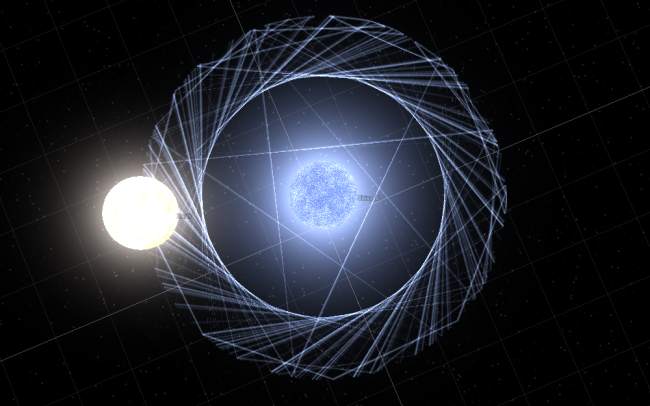
The new Global Adaptive integration mode will always take a safe step in order to maintain the accuracy as determined by the “tolerance” setting. Tolerance is the maximum amount of error that is allowed while taking a step when compared to perfect accuracy (which cannot run in realtime). This number will be much larger for simulations on the galaxy scale than simulations for dice and bowling balls, as the “acceptable” margin of error would be exponentially higher. You wouldn’t want your dice to take a million kilometer leap, but it’s probably okay for them to be off by a centimeter.
Tolerance can be manually adjusted in the settings, or you can let Universe Sandbox ² handle the adjustments. The tolerance is automatically set when loading a simulation to an amount that sufficiently maintains accuracy while also keeping the simulation running smoothly. It is also adjusted whenever a new body is added. We plan to add more automatic adjustments to respond to other simulation changes.
Finally, another large factor in determining stability is the actual numerical integrator that is used, with each having different strengths and weaknesses. For this, we can turn to a video that Thomas has created in order to explain some of the different integrators available in Universe Sandbox ².
https://www.youtube.com/watch?v=IJ2MhXUDZ6o
While the physics in Universe Sandbox ² is not perfect yet, we’ve made huge strides over the past year. Optimizations in terms of accuracy and performance are an ongoing process, and we look forward to continually improving the simulation.
Alpha 13 Now Available
Feb 6th
Alpha 13 is our biggest update yet.
Overhauled collisions, Mars climate, planetary cutaways, tidal heating and evolution, working orbital elements controls, a better looking UI, and much, much more.
Run Steam to update or buy Universe Sandbox ² now: universesandbox.com.
It’s our biggest update, and it’s also the update we’ve spent the most time on. A lot of this was due to the amount and complexity of the features we’ve been working on. But there were also quite a few unforeseen obstacles and bugs, and add to that some holiday time off… in short, it took us longer than expected. But now there’s plenty to explore, and we don’t think you’ll be disappointed.
In a previous blog post, we showed previews of planetary cutaways, Mars climate simulation, the collision rewrite, and radial velocity and light curves. These are big parts of Alpha 13, but there’s no need to repeat ourselves; let’s look at something new.
Alpha 13 introduces a vastly improved graphing tool. It now plots simulated time, autoscales and autoscrolls, and allows for customizable X and Y axes. You can view specific data by hovering your cursor, and you can easily add and change targets.
Combine that with the new climate feature that lets you simulate future greenhouse gas emission scenarios to get a clearer picture of what could be in store for Earth’s future. To learn more, run the Climate Scenarios activity in Home -> Main -> Activities.
In the screenshot above you can also see the new Milky Way background, the new font, and some new icons for the Properties window.
Also added to the UI is a list of icons at the bottom of the screen that show the bodies bound to the 1-8 number keys. Press 4 a few times to launch some moons at the Earth then turn on the new Body Colors mode for a colorful light show. With Body Colors, the colors of trails, bodies, and fragments are adjusted by mass, acceleration, or velocity.
The new collision system under the hood mean that these collisions will run faster and look better. Calculations have been improved for fragments, craters, momentum, temperature, and every other element of collisions.
The rewrite to physics also introduces a new Global Adaptive integration mode. This mode ensures that, at no matter the timestep, the simulation will retain an accuracy within a user-defined “tolerance” level. This keeps bodies on their proper paths, even when you’re running at thousands of years per second.
Check out our What’s New for a full list of new features, improvements, and fixes. It’s a long list.
We plan to return to a more regular update schedule for Alpha 14. Until then, there’s a lot for you to check out in Alpha 13.
Let us know what you think:
Multiple Languages in Universe Sandbox ²
Jan 26th
One of our goals is to make Universe Sandbox ² accessible to a wide range of users. No matter your age, scientific background, or experience with other simulators or video games, you should be able to pick up Universe Sandbox ² and let your curiosity drive your exploration of the universe.
One obstacle that may stand in the way is language. Right now, if English is not your first language, you may have a somewhat difficult time navigating Universe Sandbox ².
The good news is that we’re making progress on language localization. This makes it possible to switch on-the-fly between a bunch of languages beyond English. Right now we’re working on German and Danish, thanks to the native speakers on our team. Below is an early screenshot showing most of the UI text translated to German. (Note: we used Google Translate simply for demonstration purposes.)
Also on our shortlist is French and Spanish. After that, there’s no shortage of languages we’d like to support, including Russian, Chinese, Portuguese, etc. It’s possible we’ll open up the translation process to the public community at a future date.
If you do not yet own Universe Sandbox ², you can buy it now to get instant access to the alpha, as well as free updates up to and including the final release: universesandbox.com/2.
Watch a Demo of Atmospheric Scattering
Jan 23rd
In this video, Chad, our technical artist, demos his recent work on shaders which simulate atmospheric scattering (in real-time, of course).
Atmospheric scattering is a process in which particles in a planet’s atmosphere scatter sunlight. It is the reason why the sky is blue, and why the setting sun is red.
https://www.youtube.com/watch?v=6gfFPfgovoY
Please note: This video is a demo created by Chad; it is not from Universe Sandbox ². Atmospheric scattering is an experimental feature still in its early stages. Do not expect to see this implemented in an alpha release anytime too soon.
More information on atmospheric scattering:
If you do not yet own Universe Sandbox ², you can buy it now to get instant access to the alpha, as well as free updates up to and including the final release: universesandbox.com/2.
Black Hole Rings in Universe Sandbox ²
Jan 13th
Have you seen Interstellar? Without revealing too much of the plot… the sci-fi film follows a group of astronauts who search the depths of space in hopes of finding a new home for the human race.
The film’s special effects team worked with astrophysicist Kip Thorne in order to create visual effects that were not only beautiful representations of our universe, but were also founded on accurate science (Wired article).
One phenomenon they wanted to simulate was a massive black hole with an accretion disk. What they ended up with is certainly impressive: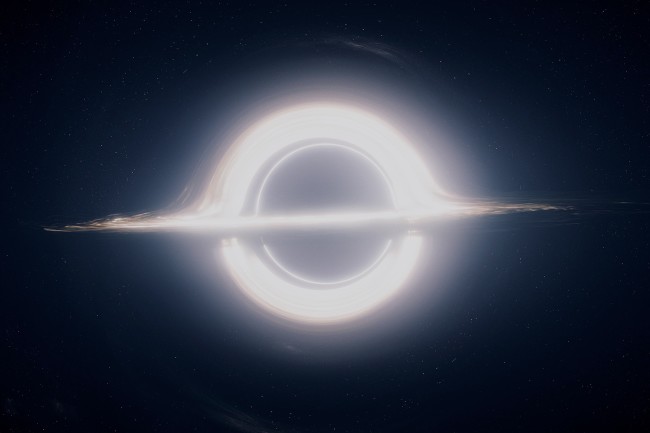
Turns out, if you add rings to a black hole in Universe Sandbox ², you get something that looks pretty similar:
Of course, you’ll notice a few differences between these images. But that might be because the first image is from a pre-rendered animation made for a film with a $165 million budget, and the second is from a real-time, interactive simulation that can run on your home computer.
If you don’t yet own Universe Sandbox ², buy it now to get instant access to the Alpha through Steam as well as free updates up to and including the final release: universesandbox.com/2

